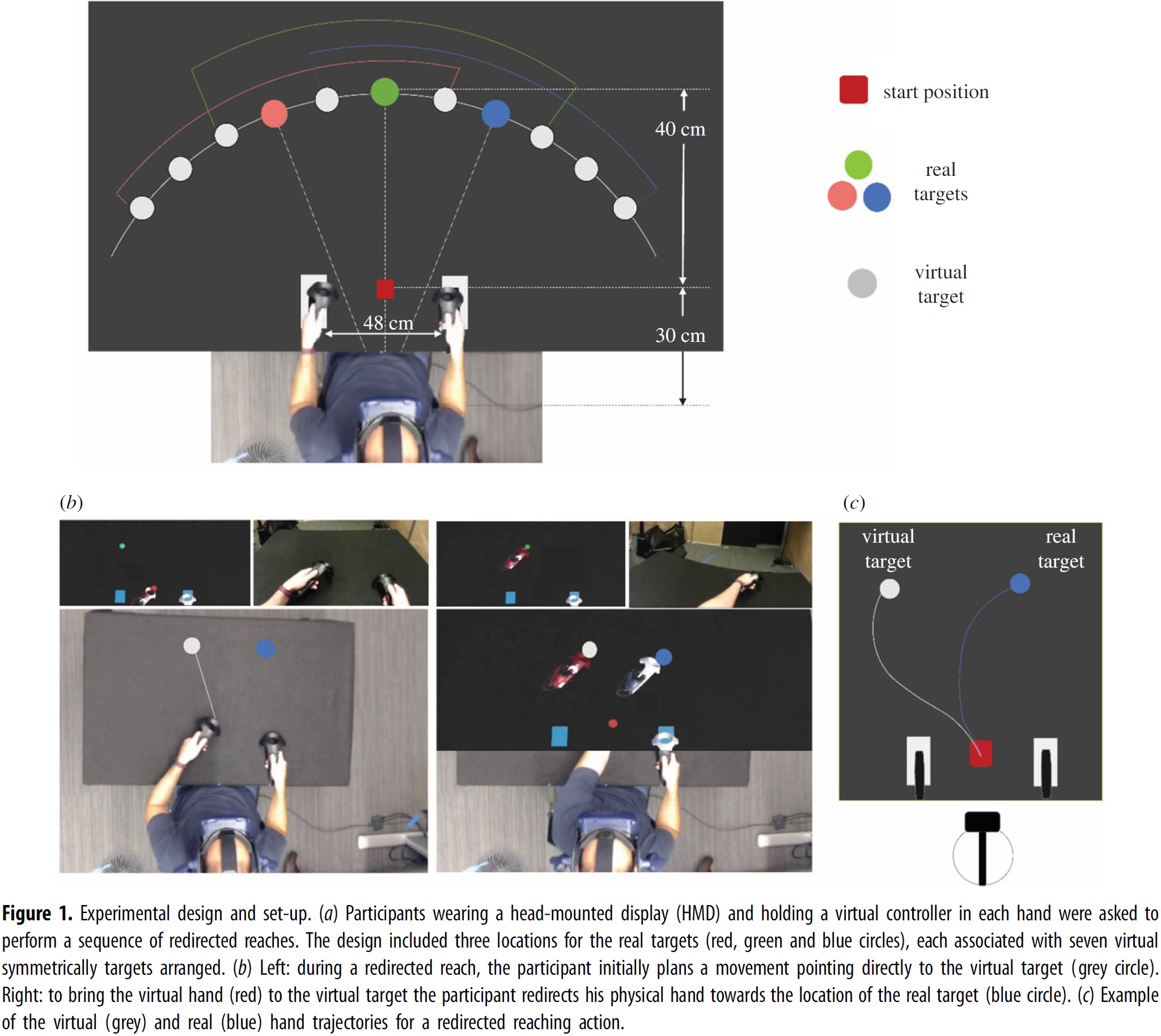Enhanced efficiency in visually guided online motor control for actions directed towards the body midline
- A. Maseli ,
- Eyal Ofek ,
- B. Cohn ,
- Ken Hinckley ,
- Mar Gonzalez-Franco
Philosophical Transactions of the Royal Society B | , Vol 378(1869)
Appears as part of the Discussion meeting issue ‘New approaches to 3D vision’ organized and edited by Paul Linton, Michael Morgan, Jenny Read, Dhanraj Vishwanath, Sarah Creem-Regehr and Fulvio Domini
Reaching objects in a dynamic environment requires fast online corrections that compensate for sudden object shifts or postural changes.
Previous studies revealed the key role of visually monitoring the hand-to-target distance throughout action execution. In the current study, we investigate how sensorimotor asymmetries associated with space perception, brain lateralization and biomechanical constraints, affect the efficiency of online corrections.
Participants performed reaching actions in virtual reality, where the virtual hand was progressively displaced from the real hand to trigger online corrections, for which it was possible to control the total amount of the redirection and the region of space in which the action unfolded. The efficiency of online corrections and the degree of awareness of the ensuing motor corrections were taken as assessment variables.
Results revealed more efficient visuo-motor corrections for actions redirected towards, rather than away from the body midline. The effect is independent on the reaching hand and the hemispace of action, making explanations associated with laterality effects and biomechanical constraints improbable. The result cannot either be accounted for by the visual processing advantage in the straight-ahead region. An explanation may be found in the finer sensorimotor representations characterizing the frontal space proximal to body, where a preference for visual processing has been documented, and where high-value functional actions, like fine manipulative skills, typically take place.
This article is part of a special issue, for the Discussion meeting ‘New approaches to 3D vision’.

